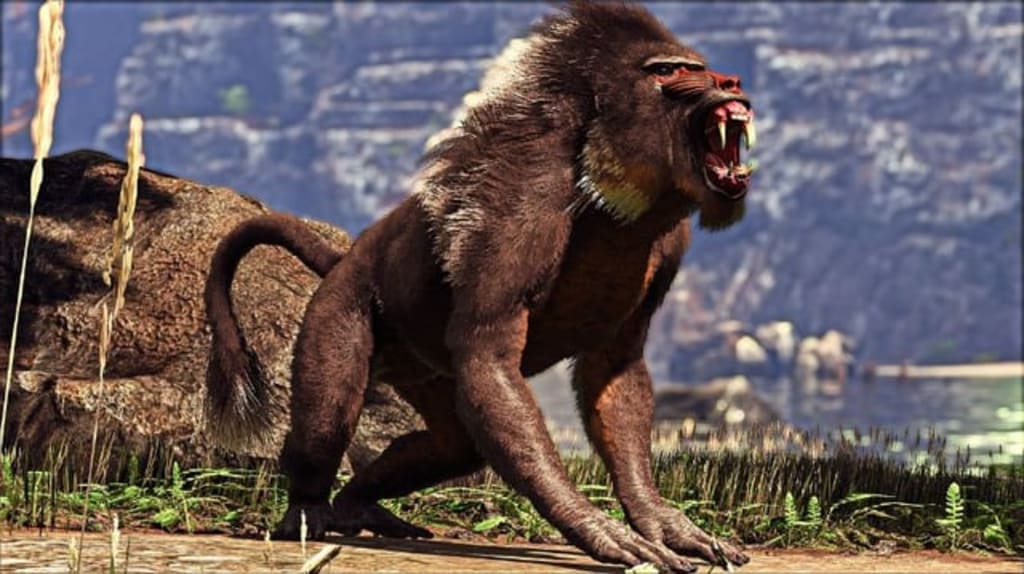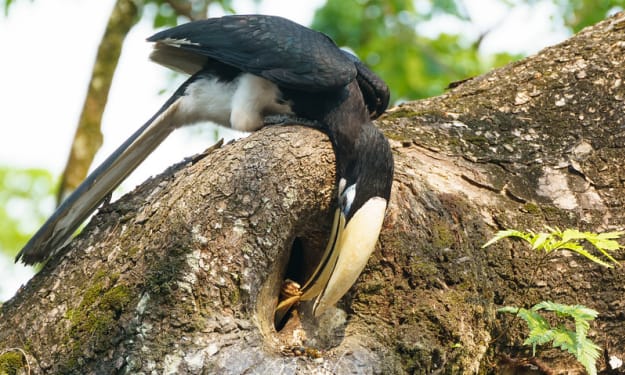
Dinopithecus
Introduction:
Dinopithecus is an extinct genus of very large primates closely related to baboons. These creatures lived during the Pliocene and Pleistocene epochs in South Africa and Ethiopia. The name “Dinopithecus” means “terrible ape.” British paleontologist Robert Broom named this genus in 19371. The only recognized species within Dinopithecus is Dinopithecus ingens. Here are some key details about it:
Size: Dinopithecus ingens was approximately twice the size of the largest living baboons. Males averaged around 46 kg (101 lb), while females weighed about 29 kg (64 lb). In some cases, males were estimated to reach a mature weight of 77 kg (170 lb).
Skull Features: The skull of Dinopithecus is similar to that of modern baboons but generally lacks facial fossae (depressions on the sides of the muzzle and lower jaw) and maxillary ridges (ridges of bone along the upper sides of the snout).
Diet: Analysis of tooth enamel carbon isotopes suggests that Dinopithecus consumed the smallest portion of grass and other savanna-based foods among South African primates. Microwear patterns on their molar teeth resemble those of living yellow baboons, indicating a broad and eclectic diet.
Locomotion: While no limb bones have been attributed to Dinopithecus, it likely spent a significant amount of time on the ground and moved quadrupedally due to its large size.
Dinopithecus, meaning "terrible ape," is an extinct genus of large baboon-like primates that lived during the Pleistocene epoch. The genus Dinopithecus is best known from the South African fossil record and is considered one of the largest and most formidable primates of its time. This ancient primate is significant not only for its size but also for what it reveals about the evolution of baboons and the environmental conditions of its era.

Discovery and Naming
The first fossils of Dinopithecus were discovered in the early 20th century by paleontologists working in South Africa. The genus was named by the prominent Scottish geologist and paleontologist Robert Broom in 1937. Broom, who made significant contributions to the understanding of South African paleoanthropology, recognized the unique characteristics of these fossils that warranted the designation of a new genus.
Morphology and Physical Characteristics
Dinopithecus was notably larger than any living baboon species, with estimates suggesting it could weigh up to 90 kilograms (198 pounds). Its robust skeletal structure indicates it was a powerful and muscular primate. Key features of Dinopithecus include:
Skull and Dentition: The skull of Dinopithecus was large and robust, with prominent brow ridges and a broad face. Its teeth were adapted for a varied diet, including large, strong canines for defense and competition.
Postcranial Skeleton: The limbs of Dinopithecus were long and sturdy, suggesting it was well-adapted for both terrestrial locomotion and some degree of climbing. Its hands and feet were also large, with strong, opposable thumbs and toes, which would have been advantageous for grasping and manipulating objects.
Size Comparison: To put its size in perspective, Dinopithecus was comparable to a modern-day male gorilla in terms of weight, although its body structure was more similar to that of modern baboons.
Habitat and Distribution
Dinopithecus fossils have primarily been found in South Africa, particularly in the regions that are now known for their rich deposits of Pleistocene fauna. During the time of Dinopithecus, these areas would have been characterized by a mix of open grasslands, woodlands, and riverine forests. This mosaic of habitats would have provided ample opportunities for foraging on a diverse diet, including fruits, leaves, seeds, and possibly small animals.
The environmental conditions of the Pleistocene were marked by significant climatic fluctuations, with periods of glaciation and interglacial warmth. These changing conditions would have influenced the distribution and behavior of Dinopithecus, pushing them to adapt to different ecological niches.
Behavior and Ecology
The behavior and ecology of Dinopithecus can be inferred from its anatomy and the context of its fossil discoveries. As a large and powerful primate, Dinopithecus likely occupied a dominant position in its environment. Some aspects of its behavior may have included:
Social Structure: Like modern baboons, Dinopithecus may have lived in large, complex social groups. These groups would have been essential for protection against predators, cooperative foraging, and raising offspring.
Diet: The dentition of Dinopithecus suggests it had a generalized omnivorous diet. It likely consumed a variety of plant materials, including tough leaves and fibrous fruits, as well as small animals and insects.
Predation and Defense: The large canines of Dinopithecus indicate that it had significant defensive capabilities. These canines would have been useful not only in intra-species competition but also in deterring predators such as large carnivores.
Mobility: The robust limbs and strong hands and feet of Dinopithecus suggest it was both an efficient terrestrial mover and a capable climber. This combination of abilities would have allowed it to exploit a wide range of resources across different habitats.
Evolutionary Significance
Dinopithecus is an important genus for understanding the evolution of baboons and other primates. Its large size and robust features suggest a different evolutionary path compared to modern baboons. By studying Dinopithecus, researchers can gain insights into:
Adaptive Strategies: How large primates adapted to the fluctuating environments of the Pleistocene, including changes in diet, habitat use, and social behavior.
Phylogenetic Relationships: The evolutionary relationships between Dinopithecus and other primates, particularly modern baboons and their relatives. This can help clarify the evolutionary history and diversification of the Cercopithecidae family.
Extinction Factors: Understanding why Dinopithecus became extinct while other primate lineages survived. This can provide broader lessons about the resilience and vulnerability of species in the face of environmental changes.
Fossil Sites and Notable Discoveries
Several significant fossil sites in South Africa have yielded important Dinopithecus specimens. These sites include:
Sterkfontein Caves: Known for its rich deposits of hominin fossils, Sterkfontein has also produced important Dinopithecus remains. These discoveries have helped to date and contextualize the presence of this genus in the region.
Makapansgat: Another key site for understanding South African paleoanthropology, Makapansgat has provided well-preserved Dinopithecus fossils that offer insights into the morphology and behavior of these primates.
Swartkrans: This site is notable for its evidence of early human activity, including the use of fire and tools. The discovery of Dinopithecus fossils here indicates that these large primates coexisted with early hominins, potentially leading to interactions and competition for resources.
Research and Technological Advances
Modern research on Dinopithecus benefits from advances in technology and methodology. Techniques such as CT scanning and 3D modeling allow for detailed analysis of fossil specimens without damaging them. Isotopic analysis can provide information on the diet and mobility of Dinopithecus, revealing how it adapted to different environmental conditions.
Genetic studies, although challenging due to the age and condition of the fossils, hold the potential to uncover more about the evolutionary history of Dinopithecus and its relationship to other primates. As technology continues to advance, new discoveries and insights into this fascinating genus are likely to emerge.
Conclusion
Dinopithecus stands out as a remarkable example of primate evolution during the Pleistocene epoch. Its impressive size, robust anatomy, and adaptive capabilities highlight the diversity and complexity of ancient primate life. Through ongoing research and discoveries, Dinopithecus continues to provide valuable insights into the evolutionary history of primates and the environmental dynamics of the past.
As scientists uncover more about this "terrible ape," we gain a deeper understanding of the intricate web of life that has shaped our planet's history. The study of Dinopithecus not only enriches our knowledge of the past but also informs our perspectives on the resilience and adaptability of species in the face of changing environments.
About the Creator
Enjoyed the story? Support the Creator.
Subscribe for free to receive all their stories in your feed. You could also pledge your support or give them a one-off tip, letting them know you appreciate their work.






Comments
There are no comments for this story
Be the first to respond and start the conversation.